- More More
- Blog
- Inspire me
- Groups
- Offers More
- Dive Courses More
- Liveaboards
More

Liveaboard Trips
On-board accommodation offering the opportunity to live right over the dive sites and to experience secluded dives...
Diving regions...
- LATEST AVAILABILITY BY REGION
- Red Sea availability
- Maldives availability
- Indonesian availability
- Socorro Mexico availability
- Galapagos availability
- ALL LIVEABOARD DIVING REGIONS
- Bahamas
- Bikini Atoll
- Caribbean
- Cocos Island
- Destinations
MoreDIVING REGIONS...
Our Top destinations....Why not try....
Find a trip
- Resort
- Liveaboard
Solitude Adventurer
AT A GLANCE
Flight time: 24 hours+
Water temperature: 28-30˚C
Highlights on board: Modern & luxurious spacious elegance
Highlights underwater: Rich diversity
Overview
The Solitude Adventurer is a 36m aluminium catamaran that offering a premium service in Indonesia. The cabins and shared spaces are modern, bright, and very chic. The extra width afforded by being a catamaran and minimalistic elegance will make your experience aboard feel akin to that of a stylish contemporary hotel.
Eight cabins accommodate up to 18 guests, spread over the upper and main decks. All cabins are en suite, air-conditioned, and have large windows or floor-to-ceiling windows, not portholes, for a never-ending view. Expect a safe deposit box, hair dryer, bath and face towels, and toiletries.
The master stateroom offers luxurious comfort. A king-sized double mattress, a wall-mounted TV with a library of movies and series, wardrobe storage and a desk make it the best-appointed cabin on board. Six deluxe twin-share cabins are located on the upper deck, and one quad cabin furnished with two bunks is situated on the main deck.
Food is a big part of a liveaboard experience; expect five meals daily while onboard the Solitude Adventurer. A light breakfast, big breakfast, lunch, afternoon snacks, and dinner will all fuel your diving. Most meals are buffet style, but there is often an à la carte or under-the-stars barbecue option. Tea, coffee, water, snacks, and noodles are always available, and there’s a selection of non-alcoholic and alcoholic drinks available for purchase, too. Special diets can be accommodated with notice.
The lounge area is where you will notice the spaciousness offered by a catamaran. Comfy chairs and bean bags allowing you to gaze out the window, chat about diving in comfort or strumming a tune on one of the available guitars. This is also where the kitchen is; the glass wall to observe food being prepared.
The dive deck is spacious, with ample storage and a camera set-up bench; there are two dedicated camera rinse tanks, specified towels, and air pressure drying. Diving is conducted on a ratio of 6 to 1, except in Komodo, where it is 4 to 1. Private guiding is available at an extra cost. Two dive skiffs are used to ferry you to the dive site.
Specification
Type: Aluminium Catamaran built in 2000 but refitted in 2017. Engine: two 1380 HP / 1015kW MTU. Length: 36m. Beam: 12m. Draft: 1.5m. Cruising speed: 10 knots, top speed 23 knots. Fresh Water: 6,000L storage and the capability to make 1500L per day.
Navigation / Safety
Furno GPS, long and short radar, weather plotter, and depth-sounder.
GMDSS with EPIRB, AIS, Life Rafts, Emergency Survival Packs, and a Semi-Automated Fire Suppression Sprinkler System. Medical oxygen and complete first aid kits are on board.
Equipment
Onboard are three Bauer compressors and a nitrox membrane system. Nitrox is 28% -30 %; a suitable MOD for any site. 8, 12, and 15-litre tanks are available with yoke or DIN fittings.
Nautilus Lifeline GPS location devices and SMBs are loaned to each guest complimentary to ensure safety. Full equipment, including computers, is available to hire. Underwater cameras are not available to hire. Each guest must dive with a computer, a whistle, and SMB.
TWIN CENTRES & CITY STOPOVERS
Extensions can be arranged for land-based stays at a variety of locations including Raja Ampat, Bali, Manado, and Singapore and Kuala Lumpur to name a few. Contact us for more information.
Schedules & prices
Price includes: Boat only price, not including flights. No of nights on boat as per itinerary (boat only price), FB basis, average 3–4 dives per day, air tanks, weights and weight belt, plus shore excursions.
Please contact us for a full package including international flights, domestic flights and transfers according to your chosen date of travel. Please note, itineraries will also require overnight stays due to internal flight timings.
SUPPLEMENTS
Stateroom cabin: from £125 per person
ONBOARD EXTRAS ($USD)
- Port & national park fee: $250 per person
- Fuel surcharge: $30-50 per person per night
- Unlimited Nitrox (32% fill): $20 per diving day
- Equipment rental: $5-25 per item per day diving
Any extras are to be paid for locally, but please give advance notice so we may pre-book with the boat.
| Date | Itinerary | Embark | Notes | Price | Enquire |
|---|---|---|---|---|---|
| 05 May 2026 | Komodo National Park 6-7 Nights | Labuan Bajo |
Route: Komodo North & South, 6 Nights. 4 spaces available. 30+ Logged Dives - PADI Advanced. | £2343 | ENQUIRE |
| 13 May 2026 | Komodo National Park 6-7 Nights | Labuan Bajo |
Route: Komodo North & South, 6 Nights. 2 spaces available. 30+ Logged Dives - PADI Advanced. | £2343 | ENQUIRE |
| 21 May 2026 | Komodo National Park 6-7 Nights | Labuan Bajo |
Route: Komodo North & South, 6 Nights. 13 spaces available. 30+ Logged Dives - PADI Advanced. | £1992 | ENQUIRE |
| 15 Jun 2026 | Komodo National Park 6-7 Nights | Labuan Bajo |
Route: Komodo North & South, 6 Nights. 4 spaces available. 30+ Logged Dives - PADI Advanced. | £2343 | ENQUIRE |
| 02 Jul 2026 | Komodo National Park 6-7 Nights | Labuan Bajo |
Route: Komodo North & South, 6 Nights. Enquire for availability. 30+ Logged Dives - PADI Advanced. | £2343 | ENQUIRE |
| 10 Jul 2026 | Komodo National Park 6-7 Nights | Labuan Bajo |
Route: Komodo North & South, 6 Nights. 18 spaces available. 30+ Logged Dives - PADI Advanced. | £2343 | ENQUIRE |
| 06 Sep 2026 | Komodo National Park 6-7 Nights | Labuan Bajo |
Route: Komodo North & South, 6 Nights. 14 spaces available. 30+ Logged Dives - PADI Advanced. | £1992 | ENQUIRE |
| 15 Sep 2026 | Ambon - Banda Sea - Alor (or reverse) | Maumere |
Route: Maumere-Ambon, 12 Nights. 4 spaces available. 50+ Logged Dives - PADI Advanced. | £4936 | ENQUIRE |
| 10 Oct 2026 | Raja Ampat & Banda Islands | Ambon |
Route: Ambon/Banda, 8 Nights. 15 spaces available. 30+ Logged Dives - PADI Advanced. | £3487 | ENQUIRE |
| 01 Nov 2026 | Raja Ampat & Banda Islands | Ambon |
Route: Ambon - Banda-Raja Ampat, 12 Nights. 15 spaces available. 30+ Logged Dives - PADI Advanced. | £5578 | ENQUIRE |
| 16 Nov 2026 | Raja Ampat | Sorong |
Route: Raja Ampat/Misool, 8 Nights. Enquire for availability. 30+ Logged Dives - PADI Advanced. | £3781 | ENQUIRE |
| 07 Dec 2026 | Raja Ampat | Sorong |
Route: Raja Ampat/Misool, 8 Nights. 2 spaces available. 30+ Logged Dives - PADI Advanced. | £3781 | ENQUIRE |
| 28 Dec 2026 | Raja Ampat | Sorong |
Route: Raja Ampat/Misool, 8 Nights. 10 spaces available. 30+ Logged Dives - PADI Advanced. | £3781 | ENQUIRE |
| 07 Jan 2027 | Raja Ampat | Sorong |
Route: Raja Ampat/Misool, 8 Nights. 4 spaces available. 30+ Logged Dives - PADI Advanced. | £3781 | ENQUIRE |
| 18 Jan 2027 | Raja Ampat | Sorong |
Route: Raja Ampat/Misool, 8 Nights. 18 spaces available. 30+ Logged Dives - PADI Advanced. | £3781 | ENQUIRE |
| 28 Jan 2027 | Raja Ampat | Sorong |
Route: Raja Ampat/Misool, 8 Nights. 13 spaces available. 30+ Logged Dives - PADI Advanced. | £3781 | ENQUIRE |
| 18 Feb 2027 | Raja Ampat | Sorong |
Route: Raja Ampat/Misool, 8 Nights. 14 spaces available. 30+ Logged Dives - PADI Advanced. | £3781 | ENQUIRE |
| 28 Feb 2027 | Raja Ampat | Sorong |
Route: Raja Ampat/Misool, 8 Nights. 18 spaces available. 30+ Logged Dives - PADI Advanced. | £3781 | ENQUIRE |
| 18 Apr 2027 | Maumere - Alor - Maumere | Maumere |
Route: Maumere/Alor, 8 Nights. 17 spaces available. 50+ Logged Dives - PADI Advanced. | £3375 | ENQUIRE |
| 29 Apr 2027 | Komodo National Park 6-7 Nights | Labuan Bajo |
Route: Komodo North & South, 6 Nights. 17 spaces available. 30+ Logged Dives - PADI Advanced. | £2343 | ENQUIRE |
| 07 May 2027 | Komodo National Park 6-7 Nights | Labuan Bajo |
Route: Komodo North & South, 6 Nights. 18 spaces available. 30+ Logged Dives - PADI Advanced. | £2343 | ENQUIRE |
| 15 May 2027 | Komodo National Park 6-7 Nights | Labuan Bajo |
Route: Komodo North & South, 6 Nights. 18 spaces available. 30+ Logged Dives - PADI Advanced. | £2343 | ENQUIRE |
| 01 Jun 2027 | Komodo National Park 6-7 Nights | Labuan Bajo |
Route: Komodo North & South, 6 Nights. 18 spaces available. 30+ Logged Dives - PADI Advanced. | £2343 | ENQUIRE |
| 09 Jun 2027 | Komodo National Park 6-7 Nights | Labuan Bajo |
Route: Komodo North & South, 6 Nights. 18 spaces available. 30+ Logged Dives - PADI Advanced. | £2343 | ENQUIRE |
| 18 Jun 2027 | Komodo National Park 6-7 Nights | Labuan Bajo |
Route: Komodo North & South, 6 Nights. 18 spaces available. 30+ Logged Dives - PADI Advanced. | £2343 | ENQUIRE |
| 26 Jun 2027 | Komodo National Park 6-7 Nights | Labuan Bajo |
Route: Komodo North & South, 6 Nights. 18 spaces available. 30+ Logged Dives - PADI Advanced. | £2343 | ENQUIRE |
| 04 Jul 2027 | Komodo National Park 6-7 Nights | Labuan Bajo |
Route: Komodo North & South, 6 Nights. 16 spaces available. 30+ Logged Dives - PADI Advanced. | £2343 | ENQUIRE |
| 12 Jul 2027 | Komodo National Park 6-7 Nights | Labuan Bajo |
Route: Komodo North & South, 6 Nights. 18 spaces available. 30+ Logged Dives - PADI Advanced. | £2343 | ENQUIRE |
| 21 Jul 2027 | Komodo National Park 6-7 Nights | Labuan Bajo |
Route: Komodo North & South, 6 Nights. 18 spaces available. 30+ Logged Dives - PADI Advanced. | £2343 | ENQUIRE |
| 06 Aug 2027 | Komodo National Park 6-7 Nights | Labuan Bajo |
Route: Komodo North & South, 6 Nights. 18 spaces available. 30+ Logged Dives - PADI Advanced. | £2343 | ENQUIRE |
| 14 Aug 2027 | Komodo National Park 6-7 Nights | Labuan Bajo |
Route: Komodo North & South, 6 Nights. 18 spaces available. 30+ Logged Dives - PADI Advanced. | £2343 | ENQUIRE |
| 16 Sep 2027 | Ambon - Banda Sea - Alor (or reverse) | Maumere |
Route: Maumere-Ambon, 12 Nights. 16 spaces available. 50+ Logged Dives - PADI Advanced. | £4936 | ENQUIRE |
| 01 Oct 2027 | Raja Ampat & Banda Islands | Ambon |
Route: Ambon/Banda, 8 Nights. 18 spaces available. 30+ Logged Dives - PADI Advanced. | £3875 | ENQUIRE |
| 21 Oct 2027 | Raja Ampat & Banda Islands | Ambon |
Route: Ambon/Banda, 8 Nights. 18 spaces available. 30+ Logged Dives - PADI Advanced. | £3875 | ENQUIRE |
| 01 Nov 2027 | Raja Ampat & Banda Islands | Ambon |
Route: Ambon - Banda-Raja Ampat, 12 Nights. 18 spaces available. 30+ Logged Dives - PADI Advanced. | £6562 | ENQUIRE |
| 17 Nov 2027 | Raja Ampat | Sorong |
Route: Raja Ampat/Misool, 8 Nights. 18 spaces available. 30+ Logged Dives - PADI Advanced. | £3781 | ENQUIRE |
| 27 Nov 2027 | Raja Ampat | Sorong |
Route: Raja Ampat/Misool, 8 Nights. 18 spaces available. 30+ Logged Dives - PADI Advanced. | £3781 | ENQUIRE |
| 07 Dec 2027 | Raja Ampat | Sorong |
Route: Raja Ampat/Misool, 8 Nights. 18 spaces available. 30+ Logged Dives - PADI Advanced. | £3781 | ENQUIRE |
| 28 Dec 2027 | Raja Ampat | Sorong |
Route: Raja Ampat/Misool, 8 Nights. 18 spaces available. 30+ Logged Dives - PADI Advanced. | £3781 | ENQUIRE |
| 07 Jan 2028 | Raja Ampat | Sorong |
Route: Raja Ampat/Misool, 8 Nights. 18 spaces available. 30+ Logged Dives - PADI Advanced. | £3781 | ENQUIRE |
| 18 Jan 2028 | Raja Ampat | Sorong |
Route: Raja Ampat/Misool, 8 Nights. 18 spaces available. 30+ Logged Dives - PADI Advanced. | £3781 | ENQUIRE |
| 28 Jan 2028 | Raja Ampat | Sorong |
Route: Raja Ampat/Misool, 8 Nights. 18 spaces available. 30+ Logged Dives - PADI Advanced. | £3781 | ENQUIRE |
| 07 Feb 2028 | Raja Ampat | Sorong |
Route: Raja Ampat/Misool, 8 Nights. 18 spaces available. 30+ Logged Dives - PADI Advanced. | £3781 | ENQUIRE |
| 18 Feb 2028 | Raja Ampat | Sorong |
Route: Raja Ampat/Misool, 8 Nights. 18 spaces available. 30+ Logged Dives - PADI Advanced. | £3781 | ENQUIRE |
| 28 Feb 2028 | Raja Ampat | Sorong |
Route: Raja Ampat/Misool, 8 Nights. 18 spaces available. 30+ Logged Dives - PADI Advanced. | £3781 | ENQUIRE |
| 09 Mar 2028 | Raja Ampat | Sorong |
Route: Raja Ampat/Misool, 8 Nights. 18 spaces available. 30+ Logged Dives - PADI Advanced. | £3781 | ENQUIRE |
| 20 Mar 2028 | Raja Ampat | Sorong |
Route: Raja Ampat/Misool, 8 Nights. 18 spaces available. 30+ Logged Dives - PADI Advanced. | £3781 | ENQUIRE |
| 30 Mar 2028 | Raja Ampat | Sorong |
Route: Raja Ampat/Misool, 8 Nights. 18 spaces available. 30+ Logged Dives - PADI Advanced. | £3781 | ENQUIRE |
Dive info
Liveaboard diving in Indonesia
The vast Indonesian archipelago was almost made for liveaboard trips. Thousands of tropical islands slide into the most biodiverse seas on Earth, where all manner of fascinating and rewarding encounters await on every dive.
With so many wonderful scuba diving opportunities spread over such a large area, a liveaboard is an ideal way for more experienced divers to get the best from this incredible destination, with both classic and off the beaten track itineraries available.
If you’ve not yet experienced Indonesia, now's the time to open your eyes to a world of wonder! The Coral Triangle, macro diving and more awaits.
Liveaboards diving to & from Bali
Eastwards from Bali, a string of picturesque islands stretch east towards Komodo, offering a wealth of different dive sites to choose from as you dive your way to or from Komodo National Park. Lombok, Gili Islands, Sumbawa, Moyo, Satonda and Sangeang are the main land masses, with numerous other islets.
This group of islands further east are surprisingly dry, looking more like parched grassland on steep volcanic formed slopes than the expected lush green tropics, unless visiting during the more rainy season (winter months).
Liveaboard diving in Komodo, Flores & Alor
Officially declared a World Heritage Site in 1986, the Komodo National Park comprises Komodo, Rinca and Padar Islands. The variety of islands within the park, combined with the current, wave and wind exposure have resulted in an incredible diversity of coastal and marine habitats.
Underwater, strong currents and deep upwelling's transport nutrient-rich waters throughout the area, which supports a cornucopia of life. Mangrove forests, sea grass beds and pristine coral reefs define the main habitats within the borders of the park. Dive sites vary from walls and coral gardens to pinnacles, drop offs and quiet bays that are ideal for macro lovers seeking rarely seen species.
Over 1,000 fish species, 260 reef building coral species and 70 sponge species have been recorded in the Komodo National Park, with a particularly high number of organ pipe coral, which accounts for the famous pink sand beaches. Turtle and dugong frequent Komodo's waters, while manta ray are regularly seen. The area is even known for the occasional whale sighting as they migrate through the park.
The islands of Komodo are also home to many rare and endemic land species including a population of the world's largest lizard, the Komodo dragons. Most cruises covering the park incorporate an island visit to see these interesting reptiles in their natural environment.
Occasionally, liveaboard boats venture farther east from Komodo to Flores and Alor. The currents that flow through the straits which connect the Banda and Savu seas create thrilling drift dives that attract large animals such as whale, tuna, shark (including hammerhead), giant grouper, eagle and manta ray, napoleon wrasse, schools of big eye jack, mola-mola, and other pelagic fish. In the Pantar strait between Alor and Pantar pilot-whale and dolphin are common as they pass between the islands during their seasonal migration to the Pacific Ocean.
Liveaboard diving Ambon & Raja Ampat
Vast areas of West Papua's land and sea are designated conservation areas. With over 3,000 reef fish and 400 coral and sponge species recorded, as well as dolphin, dugong, green, hawksbill and leatherback turtle, the diverse marine life will not fail to amaze. Above water, exotic creatures such as the venus fly trap inhabit the region.
Diving Raja Ampat by liveaboard tends to focus between December and March when the winds in this area are favourable. This is a large area with some liveaboards focusing on the north, central or south of Raja Ampat, or a combination thereof, including the dive sites of Cenderawasih Bay and Triton Bay. The entire region has world-class diving however.
Before and after this period, the focus moves to Ambon and the Banda Sea, part of the Maluku Islands. These seldom visited reefs and atolls are known for thrilling encounters, including hammerhead shark. This big fish action is complimented by incredible muck diving, particularly around Ambon.
Transition cruises taking in the Banda Sea and Raja Ampat are particularly sought after.
Some great Raja Ampat footage from our friends at Mermaid Fleet:
EXTENDED ITINERARIES & OFF THE BEATEN TRACK CRUISES
Occasionally, special itineraries are offered which either take in multiple regions on an extended itinerary, or head to more unusual regions of Indonesia, such as Wakatobi, Halmahera or the Forgotten Islands. Eye-catching options include itineraries starting in Manado, North Sulawesi and finishing in Raja Ampat (or vice versa), or beginning in Maumere and journeying east towards the Maluku Islands.
These itineraries, which are best suited to those that have already experienced Indonesian liveaboards previously, often have an exploratory feel, allowing eager divers to feel like pioneers exploring seldom charted waters!
When's the best time to dive Indonesia by liveaboard?
Indonesia spans approximately 3,000 kilometres from east to west and incorporates a range of climates and seasons. Most liveaboards move around the archipelago throughout the year, planning schedules to offer diving in each region at its best months.
The majority of liveaboards will focus on Komodo between May and September, Raja Ampat between December and March. In between these months, itineraries to locations such as Alor or the Banda Sea are offered.
Who is liveaboard diving in Indonesia suitable for
Diving in these areas is often undertaken in remote locations. Some of the dives can be quite challenging, suiting only more experienced divers in exciting, bizarre and unpredictable currents. Liveaboard diving does not get more adventurous than this!
Flight Information
The most common entry points for a liveaboard holiday to Indonesia are Jakarta and Bali.
International flights are available on multiple airlines serving this region, for example: Singapore Airlines, Malaysia Airlines, Thai Airways, Emirates, Etihad, Qatar Airways and Garuda Indonesia.
For most liveaboard departures, domestic flights are also required, which will form part of your holiday package on flight inclusive holidays. There are numerous domestic airlines providing for a wide variety of routes and options in Indonesia. The length of journey to certain liveaboard locations necessitate an overnight stop on route, which also allows valuable time to recharge and recover after a long flight.
Flight changes can be a regular occurrence in Indonesia, therefore we recommend to build in plenty of time between domestic and international flights to account for changes and delays.
Typical flight duration:
Approx. 15–17 hours including flight change.
Passports & Visas
Passengers travelling to Indonesia and Timor-Leste should have minimum six months valid on their passport from the date of return to the UK, plus one full page free. Hotel receptions may be required to take a photocopy of your passport for registration purposes.
British nationals travelling to Indonesia on holiday can enter the country purchasing a visa on arrival for up to 30 days at certain ports of entry, including international airports in Jakarta and Bali. The cost of this is Rp 500,000pp.
For further information about entry requirements, visit the website of the Indonesian Embassy in London or your nearest Indonesian embassy.
Visitors to Timor-Leste require a visa, which British passport holders can purchase on arrival at the airport. A 30 day tourist visa, single entry costs US $30. It is your responsibility to check that your passport complies with Indonesian and Timor-Leste entry requirements.
Vaccinations
There are no compulsory vaccinations for travel, but we recommend protection against typhoid, tetanus, hepatitis A and polio. Vaccination requirements are subject to change and should be confirmed before departure with your GP or local travel clinic.
Advice on Malaria, Dengue Fever and Japanese Encephalitus should be sought before travelling specific to the area of your boat's itinerary.
Further information regarding vaccinations for travel to this country can be found at www.fitfortravel.nhs.uk, from your local healthcare provider or from a specialist travel clinic.
Itineraries
From Komodo in the south to Raja Ampat in the north, Solitude Adventurer offers a superb range of itineraries to cover it all. Sailings range from six to 14 nights, and include a mix of round trip and transit crossings.
Raja Ampat and Misool 10-11 nights
Raja Ampat, Halmahera and Lembeh
Banda Sea
Ambon, Banda Sea to Raja Ampat (or reverse)
Maumere to Ambon (or reverse)
Komodo
Itineraries also available for the below transit sailings, please enquire for more information.
Raja Ampat to Maumere (or reverse), 14 nights
Maurmere to Komodo (or reverse), 8 nights
Maumere, Alor and Komodo (or reverse), 14 nights
Please note that liveaboard itineraries can change without notice. The itinerary will depend on several factors including, but not limited to, weather, diving ability of guests & the number of other boats already present at the various dive sites. All dive sites visited are subject to weather conditions and are at the discretion of your dive guides and vessel captain.
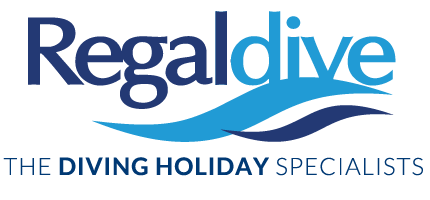
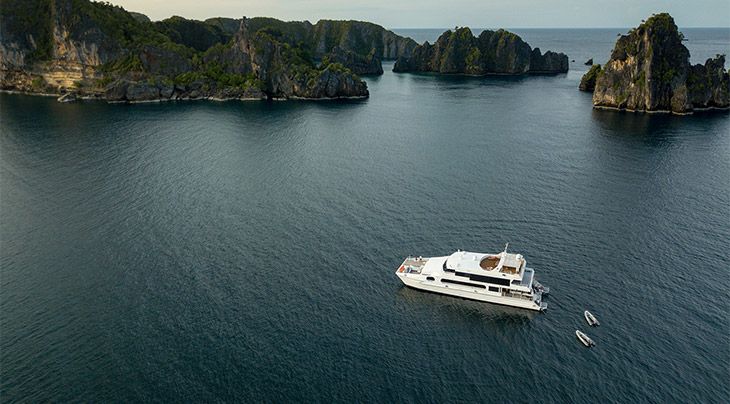
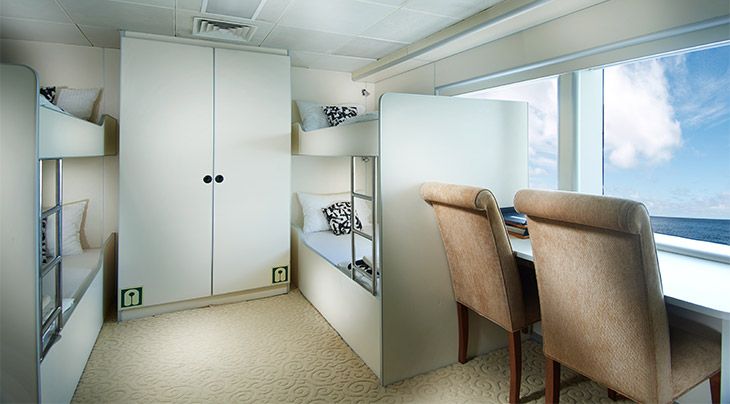
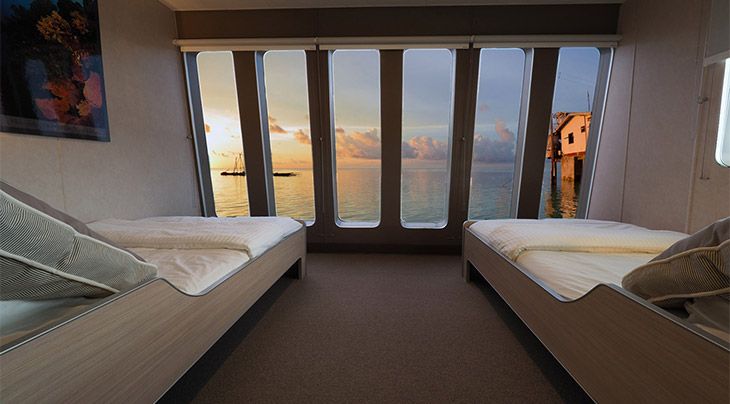
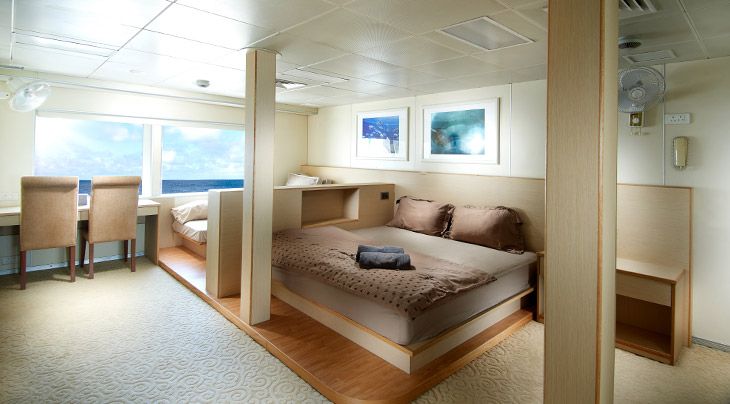
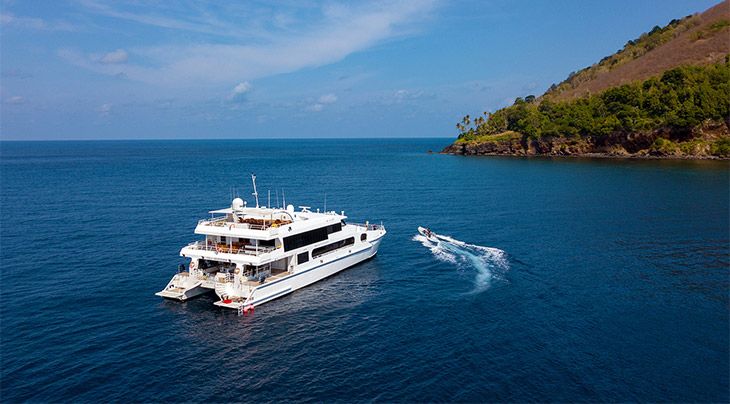
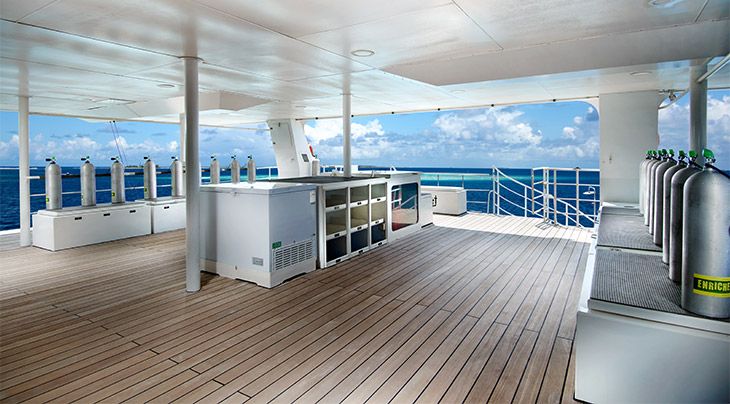
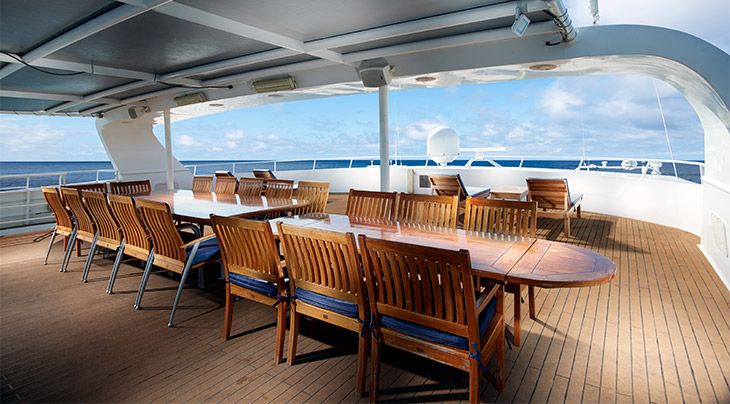
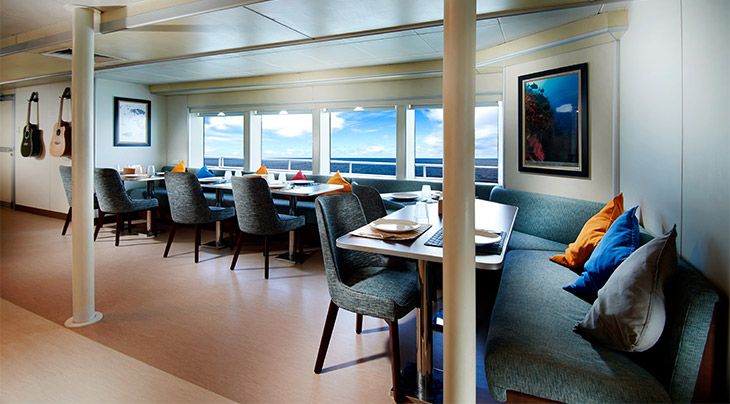
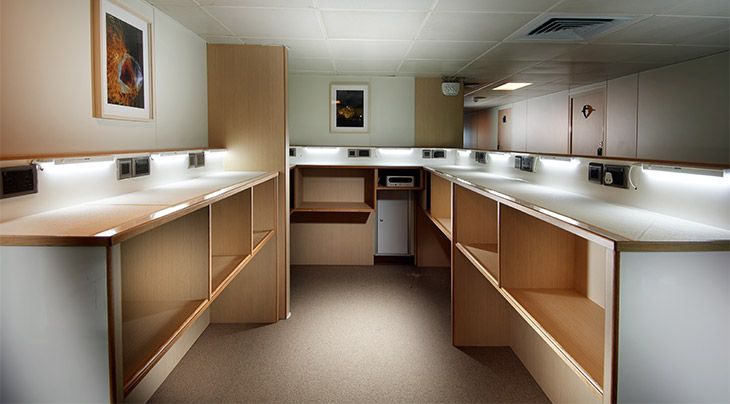












Add new review